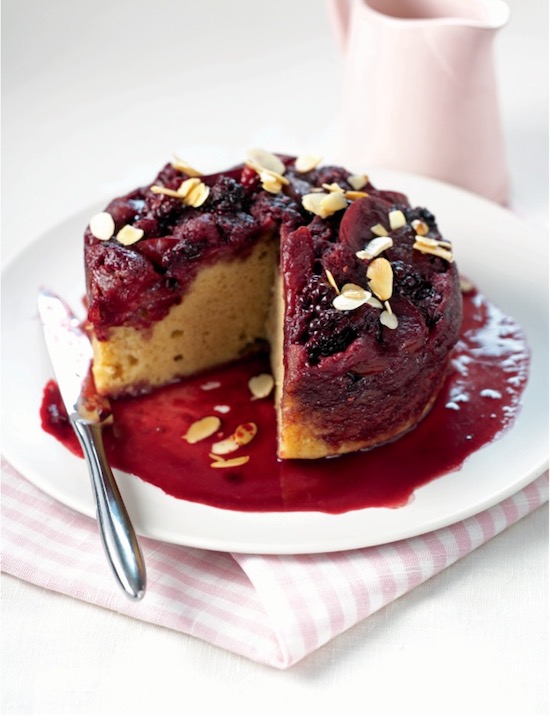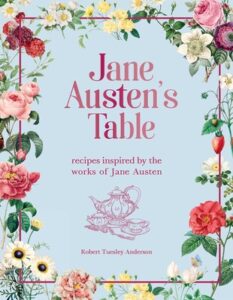
“In Moderation and Without Worry.” On Jane Austen’s Use of Food As Character
Robert Tuesday Anderson Recommends a Little “Chawton Cottage Plum Pudding” While You Read
Good health and a healthy appetite go hand in hand in Austen’s novels. Her heroines—when flourishing—eat in moderation and without worrying too much about what they are eating and what they are not. Catherine Morland, the youthful, zestful heroine of Northanger Abbey, is blessed with “a good appetite” and eats just what she wants to, when she is hungry.
The heroines’ good constitutions—and well-regulated appetites—are also conjoined with a taste for fresh air and exercise. Often, they are determined walkers, visiting friends and neighbors on foot, enjoying scenic strolls (Catherine) or traipsing, like the best of the Romantics, through the natural world (Marianne Dashwood). Elizabeth Bennet thinks nothing of walking three miles “in […] dirty weather” to see her cold-ridden sister marooned at Netherfield, “crossing field after field at a quick pace, jumping over stiles and springing over puddles with impatient activity, and finding herself at last within view of the house, with weary ankles, dirty stockings, and a face glowing with the warmth of exercise.”
We might go so far to claim that appetite, exercise, and mental health are the three points of a Jane Austen “well-being triangle”—if any one of these is lost, the others suffer, too, and overall well-being is compromised. When out of sorts, her heroines begin to display a more problematic relationship with food.
For example, when Marianne in Sense and Sensibility begins to pine for Willoughby, her appetite dwindles and she becomes thin and wan, losing her youthful bloom. Catherine, too, loses her appetite when she finds she is banished from Northanger Abbey—“She tried to eat […] but she had no appetite, and could not swallow many mouthfuls”—a situation that continues back at home where she appears—from her parents’ point of view—to turn her nose up at their ordinary breakfast: “I am sure I do not care about the bread. It is all the same to me what I eat.”
While both Elizabeth Bennet and Emma Woodhouse—both of whom have healthy egos to match their healthy appetites—flourish throughout their respective narratives, two others, Anne Elliot (in Persuasion) and Fanny Price (in Mansfield Park)—each unhappy and marginalized in her own way—have to work their way toward well-being, rediscovering their appetites (in the broadest sense) along with their sense of self as they also begin to (re-)bloom physically and emotionally.
Austen’s concern with food and flourishing is played out negatively in her supporting characters. In contrast to her flourishing heroines, those characters whom we are asked to look at critically are shown to have an unbalanced relationship with food. On the one hand, she shows us individuals (mostly men) who overengage with food, giving it too much importance in their daily lives.
Such is Mr. Hurst in Pride and Prejudice who, Elizabeth discovers when sitting next to him at dinner, “lived only to eat, drink, and play at cards” and “who, when he found her to prefer a plain dish to a ragout, had nothing to say to her.” Likewise, the cossetted, overweight Arthur Parker in Sanditon is unhealthily preoccupied with hot chocolate and buttered toast.
Obsessiveness with food can go the other way—a neurotic concern with the effects of (too much) food on health. Here the classic portrait in Austen is Emma’s father, Mr. Woodhouse, whose main trait, in fact, is his endless fussing about not only what he is eating but what those around him are eating, too. Gruel (the invalid’s diet) is, for him, the perfect foodstuff—recommended to all and sundry, whatever their state of health. He has an opinion on the healthiness of every item from “unwholesome preserves” to wedding cake. There is plenty of affection shown in the novel for Mr. Woodhouse—reflecting Emma’s own—but his food obsession is shown to be a disorder, the inevitable consequence of a life spent too much cooped indoors and pampered.
Austen’s message in her novels—of having a good appetite spurred on by exercise but all the while disentangling appetite from emotion—is a challenging one, but remains relevant to our human flourishing today.
*

Chawton Cottage Plum Pudding
As nights draw in, we yearn for warm, soothing desserts, and this slow cooker recipe, which showcases fall’s bounty of blackberries and plums, is just the thing. Serve with steaming hot custard poured over, and dig in.
Jane Austen loved the garden at Chawton. She wrote passionately and knowledgeably about it in her letters to her sister, Cassandra, charting its abundance of trees, shrubs, and flowers as they passed through their seasonal changes. Summer was a time of particular delight for her. In one letter she writes:
Our young Piony at the foot of the Fir tree has just blown & looks very handsome & the whole of the Shrubbery Border will soon be very gay with Pinks & Sweet Williams, in addition to the Columbines already in bloom. The Syringas too are coming out . . .
But Austen was well aware that a garden was about much more than sensual splendor; it also had to play its part in the household economy. Thus she continues:
We are likely to have a great crop of Orleans plumbs—but not many greengages—on the standard scarcely any—three or four dozen perhaps against the wall.
In Chawton Cottage’s thriving plum trees was the promise, she saw, of jellies and desserts in the coming months, and bottled fruits through the winter. Here is a recipe that will capture all the freshness of those “Orleans plumbs” but sturdy enough to keep away any fall chill.
*
Serves 6
Prep + cooking time: 4.5-5.5 hours
Ingredients
7 tablespoons butter, at room temperature, plus extra for greasing
3/4 cup blackberries
7 oz. ripe red plums, halved, pitted, and sliced
2 tablespoons raspberry jelly
1/2 cup superfine sugar
3/4 cup self-rising flour 2 eggs, beaten
2/3 cup almond flour
few drops of almond extract
toasted slivered almonds, to decorate (optional)
Directions
1. Preheat the slow cooker if necessary; see the manufacturer’s instructions. Lightly butter a 5-cup soufflé dish and line the base with a circle of nonstick parchment paper, checking first that the dish will fit in the slow cooker pot. Arrange the blackberries and plums in the base, then dot with the jelly.
2. Beat the butter and sugar in a bowl with a wooden spoon or handheld electric whisk until soft and creamy. Gradually mix in alternate spoonfuls of flour and beaten egg, and continue adding and beating until the mixture is smooth. Stir in the almond flour and almond extract. Spoon the mixture over the fruit, spread it level, and cover the top with foil.
3. Lower the dish into the slow cooker pot and pour boiling water into the pot to come halfway up the sides of the dish. Cover with the lid and cook on high for 4–5 hours or until the cake is well risen and springs back when pressed with a fingertip.
4. Lift the dish out of the slow cooker pot using a dish towel and remove the foil. Loosen the edges of the dessert with a knife and turn out onto a plate with a rim. Decorate with toasted slivered almonds, if desired.
__________________________________

Excerpted from Jane Austen’s Table: Recipes Inspired by the Works of Jane Austen by Robert Tuesday Anderson. Copyright © Octopus Publishing Group, 2021.
Robert Tuesday Anderson
Robert Tuesley Anderson is a writer, poet, and editor living in the Southern Uplands of Scotland. His cookbooks have given him the opportunity to bring together two lifelong enthusiasms: good, home-cooked food and classical literature.



















